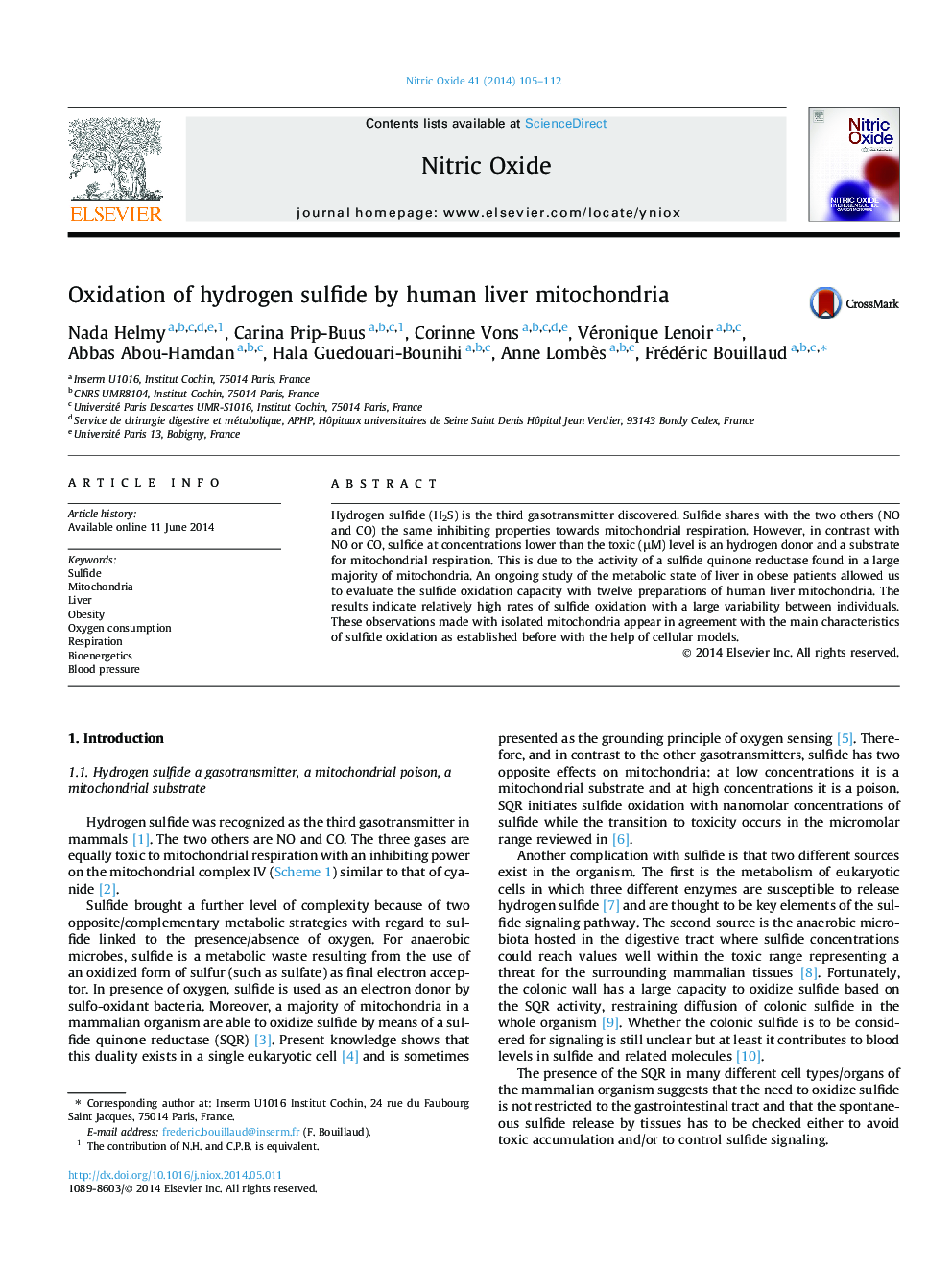| Article ID | Journal | Published Year | Pages | File Type |
|---|---|---|---|---|
| 2000682 | Nitric Oxide | 2014 | 8 Pages |
•Sulfide oxidation is evaluated in mitochondria from liver biopsies of obese patients.•Sulfide addition stimulated (<10 μM) or inhibited (>10 μM) mitochondrial respiration.•We generated steady states with balanced sulfide infusion and oxidation rates.•The maximal sulfide oxidation rate ranged from 27% to 155% of the respiratory rate.•Explanations are proposed for these high values of possible oxidation rates.
Hydrogen sulfide (H2S) is the third gasotransmitter discovered. Sulfide shares with the two others (NO and CO) the same inhibiting properties towards mitochondrial respiration. However, in contrast with NO or CO, sulfide at concentrations lower than the toxic (μM) level is an hydrogen donor and a substrate for mitochondrial respiration. This is due to the activity of a sulfide quinone reductase found in a large majority of mitochondria. An ongoing study of the metabolic state of liver in obese patients allowed us to evaluate the sulfide oxidation capacity with twelve preparations of human liver mitochondria. The results indicate relatively high rates of sulfide oxidation with a large variability between individuals. These observations made with isolated mitochondria appear in agreement with the main characteristics of sulfide oxidation as established before with the help of cellular models.
